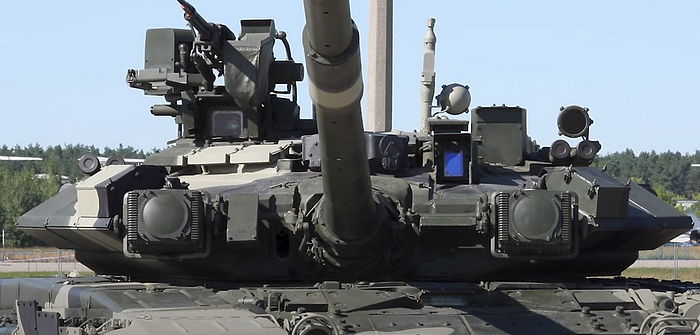Tanks and Their Evolution: The Rise and Struggles of the T-90 in Modern Warfare

Tanks have been a cornerstone of military might since World War I. Initially designed to break through enemy lines, they quickly evolved into different categories based on their roles and capabilities. Let’s take a journey through the history of tanks, focusing on the Russian T-90 main battle tank (MBT) and how it has fared in the modern battlefield, especially in the Ukraine conflict.
The Evolution from Heavy, Light, and Medium Tanks to MBTs
When tanks first rolled onto the battlefield, they came in four flavors: heavy, super-heavy, light, and medium. Heavy tanks had thick armor and big guns but were slow. Light tanks, on the other hand, were fast and nimble but had less protection and firepower. Medium tanks tried to balance these extremes, offering a bit of everything but not excelling in any one area.
The big change came in 1945 with the introduction of the Centurion by England. This was the world’s first main battle tank (MBT), which combined the best features of all previous tank types: the firepower and armor of heavy tanks and the speed of light tanks, all wrapped up in the medium tank’s frame. By the 1960s, MBTs had pretty much replaced all other types of tanks.
Enter the T-90: Russia’s Tank of Choice
The T-90 is a prime example of a modern MBT. It was developed during the Soviet era to replace the older T-64, T-72, and T-80 tanks. Despite being based on the T-72’s simpler and cheaper design, the T-90 was far from a budget tank. Work on the T-90 began in 1986, and by 1992 it was ready for action.
In 2001, India decided to get in on the T-90 action, signing a deal to acquire the T-90S. Since India was already making T-72 tanks, this transition was relatively smooth. The Indian version saw some upgrades over time, making the T-90 even more formidable. Russia itself adopted a similar model, known as the T-90A.
What Makes the T-90 Tick?
The T-90 is often listed among the deadliest tanks in the world, and for good reason. Its main gun is a 125mm smoothbore tank gun that can fire a variety of ammunition types, including armor-piercing and high-explosive rounds, as well as anti-tank guided missiles. It has an autoloader, so it doesn’t need an extra crew member to reload, speeding up the firing process.
For secondary weapons, the T-90 sports a remotely controlled heavy machine gun that can take on both ground and air targets. This, combined with a powerful diesel engine that lets the tank hit speeds of up to 60 km/h on roads, makes the T-90 a versatile and deadly machine.
Defensively, the T-90 is well-equipped. It has three layers of protection: composite armor, explosive reactive armor (ERA), and the advanced Shtora-1 countermeasure suite. This setup helps the T-90 withstand various types of attacks, from armor-piercing rounds to guided missiles.
The T-90 in Ukraine: A Tough Battlefield
Despite its impressive specs, the T-90 has faced serious challenges in Ukraine. When Russia invaded, they expected a quick victory, but Ukrainian resistance was much tougher than anticipated. Poor planning and logistics left many Russian tanks, including T-90s, stranded and vulnerable.
Reports vary, but it’s clear that Russia has lost a significant number of tanks in Ukraine. Sources like the RAND Corporation and the International Institute for Strategic Studies estimated that Russia had about 2,700 MBTs at the start of the invasion. Ukrainian claims suggest Russia has lost over 680 tanks, with many being T-90s.
One major issue has been the vulnerability of the T-90 to modern anti-tank weapons like the American-made FGM-148 Javelin. The Javelin’s top-attack mode targets the least armored part of the tank: the top. Its tandem-charge warhead can defeat ERA and penetrate the main armor, which has proven highly effective against Russian tanks.
Why Did the T-90 Struggle?
Several factors have contributed to the T-90’s struggles in Ukraine:
1. Urban Warfare Challenges: Tanks are designed for open battlefields, not cities. In urban settings, they become easy targets for hidden anti-tank teams and IEDs.
2. Logistical Failures: Poor planning led to fuel shortages and abandoned tanks. Long convoys of tanks on highways became easy prey for Ukrainian forces.
3. Lack of Infantry Support: Tanks need infantry and air cover for protection. Without these, tanks are exposed to ambushes and anti-tank weapons.
4. Technological Shortcomings: While the T-90’s defensive systems are advanced, they couldn’t handle modern anti-tank missiles like the Javelin, which use innovative targeting methods to bypass defenses.
Conclusion
The evolution of tanks from World War I to modern MBTs like the T-90 showcases the continuous advancements in military technology. However, the ongoing conflict in Ukraine highlights the importance of strategy, logistics, and adaptability in warfare. Despite its advanced features, the T-90’s performance in Ukraine underscores the limitations of even the most sophisticated technology when faced with modern countermeasures and tactical challenges.
Tanks will keep evolving, and future designs will likely address the vulnerabilities exposed in current conflicts. The lessons learned from the T-90’s deployment in Ukraine will shape the next generation of armored vehicles, ensuring they remain a crucial component of military strategy for years to come.
